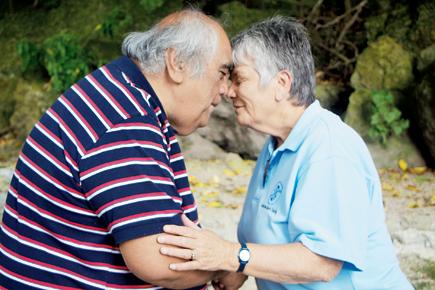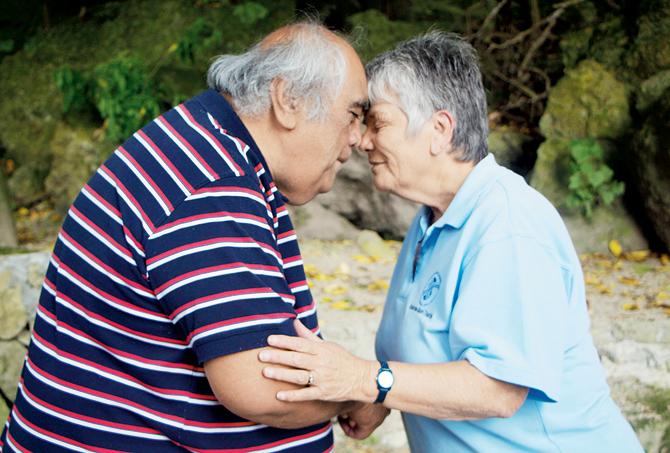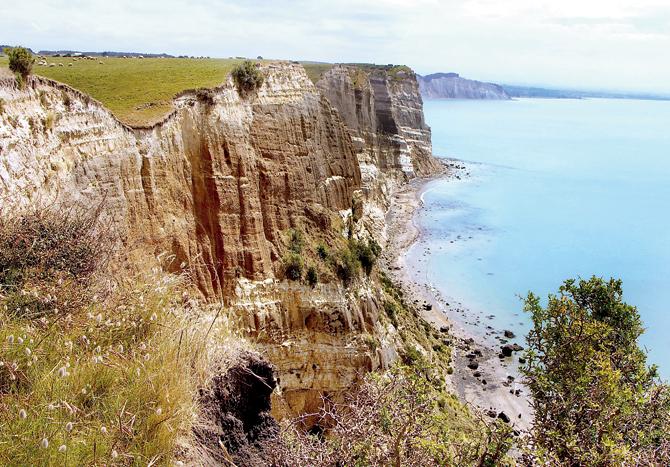The art deco city of Napier in New Zealand is charming all right, but Sonia Nazareth is won over by the tenderness of the gannets at Hawke’s Bay, the deep connection the Maoris seek in relationships and their way of life that’s one with nature and community

Maori
Hawke’s Bay, New Zealand
Best time to visit: November-February
You need: 5 days
When it comes to the more sophisticated of life’s offerings, you could say that Hawke’s Bay has its priorities right. The art deco city of Napier, with its striking buildings and vintage cars, has the culture vulture ‘ooh’ing and ‘aah’ing. Its twin city of Hastings, that’s just a 40-minute drive away, with its Sunday farmer’s market, vineyards and glorious foodscape, inspires in us the same tones we would otherwise reserve for symphony orchestra. While it is a remarkable testament to the ingenious species from which we hail, the sublime is what we’re after, once our cultural cravings have been set to rest.
ADVERTISEMENT

Robert and Denise greet the Maori way, with warmth and intensity. The couple lives at the seaside village of Waimarama and guides travellers across Maori trails
Cape Kidnappers, as enigmatic as its name, is a half-an-hour journey by road from the twin cities. Even if you know little else about it, it’s likely that the fact that’s its home to the world’s largest mainland Gannet colony, will glitter in your memory. Gannets, for those who came in late, are large seabirds with resplendent white plumage.

As part of their mating ritual, paired gannets rub beaks together, preen head feathers, bow and call to each other in tenderly. Cape Kidnappers is home to the world's largest mainland gannet colony. Pics/Sonia Nazareth
The driver leading the Gannet Safari gets us aboard a coach that from the word go, takes us from off the straight-and-narrow of our world down a path of windy, wild enchantment. The transformation of the landscape is as startling as it is immediate. First pine trees, then yellow-green meadows, broad rolling pastures, riverbeds — all of which look photoshopped into the scape. The only aspect of the journey that keeps the scene from dissolving into the stuff of dreams, are the gates separating the individual cattle fields, which I alight from the vehicle to open.

Cliffs on the way to Cape Kidnappers
Grand sight of gannets
In theory, we know we are driving towards the colony of gannets. In practice, nothing prepares us for the scale or enormity of the sight. Like a carpet spread across a cliff-top, these large seabirds — with their white plumage, yellow heads and black tipped wings, set up a cacophany. The atmosphere turns electric with the birds preening and flying. All other thoughts and cares fade in nature’s amphitheatre, especially when our eyes zoom into the scene. Paired gannets rub beaks together, preen head feathers, bow and call to each other in heart-stoppingly tender fashion.

The art deco city of Napier is home to some striking buildings
Both male and female, share like an ahead-of-its-times family — incubation duties and chick-rearing responsibility. Overhead birds swoop, carrying nesting material — from seaweed to grass or feathers, sometimes pilfering from other nests to strengthen their own, in a way that reminds me of my own species.

vintage cars
Every bit of birdie behaviour comes layered with meaning. The guide, post many hours spent in close observation, is a walking encyclopedia. He points to a lone gannet swinging his head from side to side, bowing his beak beneath his wings, and tells us he’s doing this because he’s feeling challenged by another bird. Could be, he says with a wink, that a female gannet not his partner, has landed nearby.
What’s especially significant about these birds who arrive here in July, with most leaving in April (except the few who settle here to roost for the winter), is that they’ve come to trust the area. There’s a certain fearlessness in how close they let a traveller approach, almost to the extent that it beggars any received concept of what’s natural.
Perhaps it’s the knowing with utmost assurance, that not only will a traveller not disrupt their proceedings, but also that if he were to get a little cheeky, the birds could resort to their strengths in unity, numbers and inordinately sharp beaks. And it’s reinforced once more my belief — that places that live close to nature develop personalities entirely their own. How, for instance, can you continue to carry your city airs with you, standing atop this cliff, with wind in your hair and sand in your shoes?
Maori way of life
To sustain this feeling of being-close to abundant nature, the next stop on my Hawke’s Bay adventure is a 45-minute drive away to the seaside village of Waimarama, known for its hosted, personalised Maori trails. Unlike several of the Maori experiences I’ve done that have been structured events, showcasing aspects of the culture like the haka (war dance) and the hangi (traditional feast), this is far-removed from the exotic. While those places that showcase Maori culture serve as good overview and primer, there’s little to beat visiting a thriving, living culture.
My Maori guides, Robert and Denise, greet me with instinctive courtesy, and an intensity almost forgotten by our multi-tasking generation. Our first stop is the Waimarama beach — gloriously golden, with a few fishing boats providing perspective to the scape. If you’re expecting to use this time to introspect, you’re going to be disappointed; but if you go with an openness to listen to creation myths, and learn where the great migration canoe of a section of Maori people was dragged ashore to make repairs over 800 years ago, you’re going to feel illuminated.
From the coast, we visit the fortress of Hakikino. What used to be a battlement area, is now sacred ancestral land — part of a family farm, but open to travellers and locals who want to re-connect with ancient Maori heritage. Brimming over with native bush, forest and wetland area, it’s easy to see what inspires local pride and lore. Denise and Robert lead us deeper into the heart of the reserve. Here Denise steeps some heart-shaped leaves of the kawakawa bush in hot water from out of a flask she’s carrying, and hands me a cup from which to drink. The brew, now rich with vitamin C, is especially good for colds. And there’s a cure for just about everything you can name, in this native forest.
Time to stand, stare and love
What runs through every interaction in these parts is the idea of sustainability, care for the planet and the need to put back into nature — in much the same manner as we draw from it. In the wetland area, is a pond sheltering native eels. While marvelling at the creatures, a native boy engages me in a discussion on greenstone or pounamu. “You know why we value the pounamu?” he asks. Because contained in its colours are reminders of the clouds and the river.
We’re running short of time, and we stop at the marae or meeting house for a quick look. Don’t go too close my guide warns, for there’s a meeting unfolding as we speak; and if someone sees you, they’ll rush out and give you a traditional welcome — in response to which, it would be rude not to linger.
And there’s something to be said in these fast-paced times — for people who have time for you, who turn to nature for their answers, who still have at their fingertips an abundance of stories. And who in traditional greeting or hongi, don’t shake your hand or touch your feet, but instead draw close to you, no matter if you’re an old-friend or a stranger — to greet you with characteristic intimacy. Denise presses her nose against mine and there we stand - nose-to-nose, breath-to-breath, exchanging not just a greeting, but also life-force, giving each other, in this simple gesture, the most precious gift one human being can give another – a feeling of deep connection.
 Subscribe today by clicking the link and stay updated with the latest news!" Click here!
Subscribe today by clicking the link and stay updated with the latest news!" Click here!







